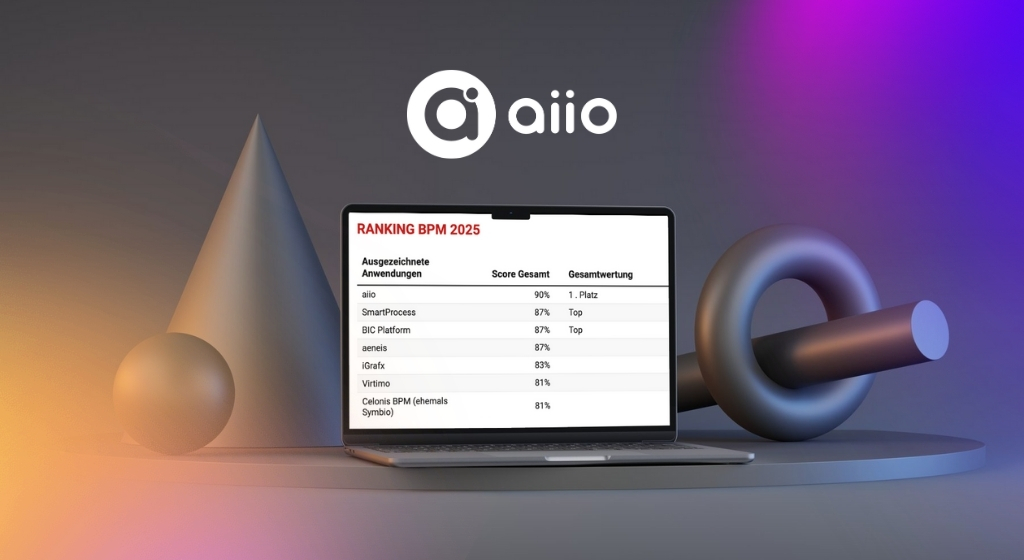The Process Landscape: Basics, Examples and Best Practices

Definition and Purpose: Transparency for everyone
Broken down to the essentials, the process landscape is a tool for the visual representation of the most important core and support processes in a company. The main purpose is to clearly define organizational structures, responsibilities and processes. This not only creates transparency, but also facilitates collaboration and improves efficiency within the company.
In turn, the improved transparency ensures an increase in efficiency and effectiveness in the company. Furthermore, it also promotes and simplifies collaboration between departments.
To return to the GPS metaphor, the process landscape acts as a kind of orientation aid for every employee: on the one hand, to be able to locate and classify their own processes and responsibilities in the company, and on the other hand, to be able to better understand the processes in the company in general.
Best Practices for Creating Your Process Landscape
When creating a process landscape, a hierarchical approach is usually taken. First, core processes are identified and represented. Core processes are processes that contribute directly to the value creation of the company and which, in this sense, form the "core" of the company's business activities. Production and sales processes that are directly related to satisfying customer needs are examples of this.
Following the core processes, the support processes are mapped. These merely support the core processes; they themselves are not directly involved in the value creation. In addition to IT support, this includes the company's human resources management and financial administration; processes that do not directly affect the company's business goals but are nevertheless essential for the success of the core processes.
Once both types of processes have been identified and classified, this information can be used to begin the graphical representation. This can take various forms; the most important thing here is that it is a clear and unambiguous representation that clearly shows the processes and their dependencies.
A crucial success factor for the process landscape is the involvement of relevant stakeholders. Their perspectives and knowledge are essential for a precise and valuable representation. This is the only way to ensure that the process landscape can fulfill its purpose as a complete and accurate representation of the company's processes. Furthermore, the involvement of relevant stakeholders ensures that the process landscape remains understandable for those stakeholders: If the process landscape is complicated and does not promote the central goal of improving transparency for these stakeholders, it is logically useless.

At this point, it should also be mentioned that a company's process landscape is, of course, constantly changing. The process landscape must therefore be designed to react dynamically to these changes. To this end, the map must be checked regularly and adjusted if necessary. The same applies to the integration of feedback from users and stakeholders.
The Practical Benefits of the Process Landscape
So, we have now learned the best practices for creating and managing a process landscape. What exactly does the process landscape do for me in my daily, practical work?
1. Increased Transparency: As we clarified at the beginning of this article, one of the biggest advantages of a process landscape is the increased transparency within the company. Stakeholders can easily see how processes interact and where responsibilities lie, which increases the general understanding of the organization.
2. Improved Communication: At the same time, increased transparency promotes communication between teams and departments, as misunderstandings and information losses are reduced. The process landscape establishes a "common language" within the company, which avoids misunderstandings and improves communication.
3. Continuous Improvement: The clear structures of the process landscape make it easier to identify redundancies or ineffective steps in processes, which can then be eliminated or redesigned in the next step. In this sense, the process landscape, which should be reviewed regularly for continuous improvement, promotes the optimization of processes within the company.
4. Risk Management & Compliance: In addition to errors or inadequacies, risks can also be identified more easily. At the same time, the orderly documentation of all processes helps to meet regulatory requirements - so the process landscape also ensures compliance.
5. Facilitate Training & Onboarding: The process landscape as a starting point for new employees facilitates orientation and onboarding in the company and is therefore an important component, especially in onboarding.
Conclusion: A versatile tool
In summary, a well-created process landscape is an invaluable aid for any company. It promotes transparency, improves communication, enables continuous optimization of processes and contributes to compliance with regulatory requirements. At the same time, it makes it easier for new employees to get started and strengthens risk management. A regularly updated process landscape can thus make a significant contribution to improved efficiency and effectiveness within the company.
Would you like to take your own process management to the next level right away? Then start your free trial for aiio today and see for yourself how easy it can be to create a detailed process landscape for your company - and much more!
Don't hesitate, ask directly
Please use our contact form. Our team will get back to you as soon as possible.

.jpeg)



